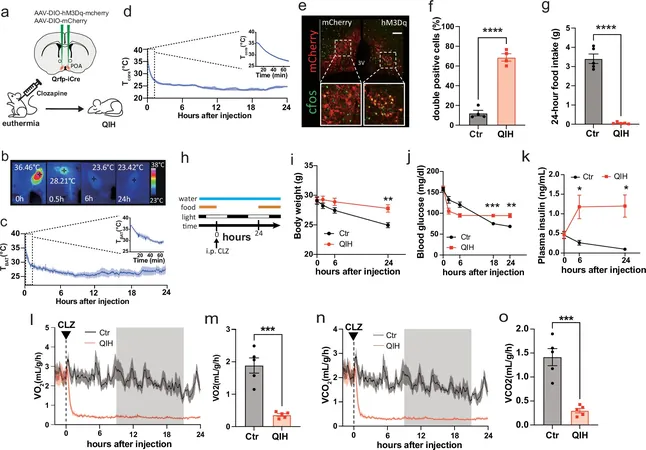
Chilling Discovery: How Hypothermia Could Transform Our Understanding of Metabolic Disease
2025-07-10
Author: Li
Unlocking the Secrets of Hibernation
Imagine a world where the winter chill not only saves lives but also holds the key to treating metabolic diseases like diabetes and obesity! While some mammals have perfected the art of hibernation to survive food shortages, the fascinating mechanisms behind their metabolism and body temperature regulation have remained shrouded in mystery.
The Quest to Understand Metabolism and Temperature
For decades, scientists have theorized that the drop in body temperature during hibernation is tied to a slower metabolism. While it’s known that glucose metabolism—the sugar that powers our cells—creates heat, the question has lingered: Does metabolism dictate body temperature, or does temperature influence metabolism?
A Breakthrough in Research
Now, researchers from the Exploratory Research Center on Life and Living Systems (ExCELLS) and the National Institute for Physiological Sciences (NIPS) have made a groundbreaking discovery using a novel mouse model that can induce hypothermia without interfering with metabolism. This model, known as Q-neuron-induced hypothermia and hypometabolism (QIH), allows scientists to isolate the effects of temperature on metabolic processes.
The Surprising Findings
In a startling revelation, the study discovered that mice in a hypothermic state exhibited elevated glucose and insulin levels—key indicators of insulin resistance, which can lead to type 2 diabetes. Remarkably, simply warming these mice to their normal body temperature rapidly restored their metabolic health.
Temperature as a Regulator
As researcher Ming-Liang Lee pointed out, "Lowering body temperature alone can reversibly induce a diabetes-like state in healthy animals. This shows that body temperature is not just a passive result of metabolic activity, but an active player in regulating glucose metabolism." This revolutionary insight challenges the long-held belief about the relationship between metabolism and temperature.
Next Steps in Research
The team is now laser-focused on uncovering the intricate molecular mechanisms that link body temperature with glucose regulation in various tissues. Their ultimate goal? To develop novel 'therapeutic hypometabolism' strategies that could reduce metabolic stress in diabetic patients and combat systemic inflammation.
A New Hope for Metabolic Diseases
With this groundbreaking study, researchers are not just peeling back the layers of hibernation physiology; they’re potentially paving the way for innovative temperature-based treatments for metabolic diseases. As we stand on the brink of a new understanding, the chilling potential of hypothermia might just warm the hearts of those battling metabolic disorders.




 Brasil (PT)
Brasil (PT)
 Canada (EN)
Canada (EN)
 Chile (ES)
Chile (ES)
 Česko (CS)
Česko (CS)
 대한민국 (KO)
대한민국 (KO)
 España (ES)
España (ES)
 France (FR)
France (FR)
 Hong Kong (EN)
Hong Kong (EN)
 Italia (IT)
Italia (IT)
 日本 (JA)
日本 (JA)
 Magyarország (HU)
Magyarország (HU)
 Norge (NO)
Norge (NO)
 Polska (PL)
Polska (PL)
 Schweiz (DE)
Schweiz (DE)
 Singapore (EN)
Singapore (EN)
 Sverige (SV)
Sverige (SV)
 Suomi (FI)
Suomi (FI)
 Türkiye (TR)
Türkiye (TR)
 الإمارات العربية المتحدة (AR)
الإمارات العربية المتحدة (AR)